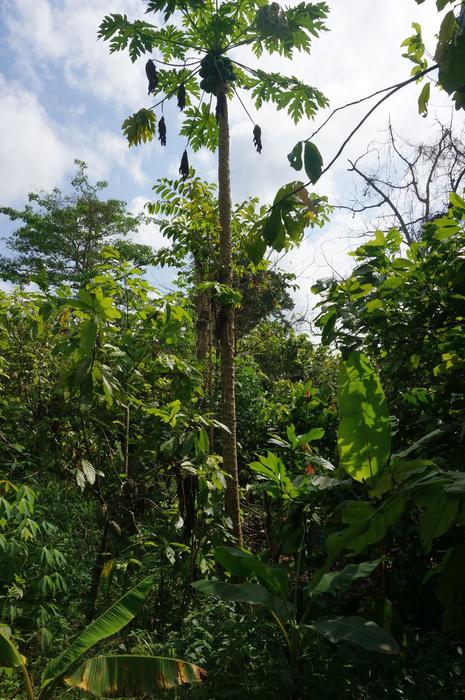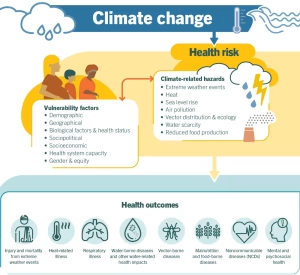Climate Derisking as a Decarbonization Strategy – The Regulatory Review

Report on Climate Derisking as a Decarbonization Strategy and its Alignment with Sustainable Development Goals
1.0 Introduction: Decarbonization, Derisking, and Global Goals
In response to the urgent need for climate action, as outlined in Sustainable Development Goal 13 (Climate Action), nations are implementing strategies to decarbonize their economies. The United States Inflation Reduction Act (IRA) of 2022 exemplifies a “derisking” approach, utilizing government incentives such as tax credits to encourage private investment in renewable energy. This strategy aims to accelerate the transition towards SDG 7 (Affordable and Clean Energy) by minimizing financial risks for private investors. However, analysis by scholars Shelley Welton and Conor Harrison suggests that this approach, if not carefully managed, may undermine sustainable development by referencing historical failures in the U.S. nuclear energy sector.
2.0 Historical Case Study: The U.S. Nuclear Renaissance and its Development Outcomes
2.1 The Energy Policy Act of 2005
In the early 2000s, the U.S. government attempted to revive the nuclear power industry through the Energy Policy Act of 2005. This legislation offered a suite of derisking incentives, including tax credits, loan guarantees, and risk insurance, to promote a form of clean energy infrastructure intended to support SDG 9 (Industry, Innovation, and Infrastructure) and SDG 7. The objective was to shield investors from the inherent risks of constructing new nuclear reactors.
2.2 Project Failures and Negative Impacts on SDGs
Despite federal incentives, the initiative largely failed to attract investment, except in a few southern states where regulations allowed construction costs to be passed directly to customers. The outcomes were detrimental to sustainable development principles:
- Georgia (Plant Vogtle): The only completed project was finished over a decade late and cost more than double its initial budget, raising questions about the economic viability and affordability aspect of SDG 7.
- South Carolina: The state’s nuclear venture was abandoned after incurring nearly $9 billion in costs, leaving two unfinished reactors.
- Florida and North Carolina: Projects in these states were also abandoned before completion.
In these cases, the financial burden of failed projects was transferred to ratepayers. This outcome directly contradicts the goals of ensuring affordable energy (SDG 7), promoting sustainable communities (SDG 11), and reducing inequalities (SDG 10), as local communities paid for infrastructure projects that provided no decarbonization benefits.
3.0 Analysis of Hidden Risks in Derisking Strategies
3.1 Identified Threats to Sustainable Energy Transition
Welton and Harrison identify several hidden risks in derisking initiatives that threaten the successful achievement of climate and energy goals. These risks demonstrate the complexity of building the resilient infrastructure required by SDG 9.
- Regulatory and Legal Hurdles: Permitting processes and legal challenges frequently cause significant delays, increasing project costs and uncertainty.
- Market Volatility: Long project timelines, often spanning decades, mean that the initial financial assumptions can be rendered obsolete by dramatic shifts in energy markets.
- Political and Institutional Inertia: Political commitments can keep failing projects alive long past the point of economic viability, leading to a misallocation of resources that could otherwise fund more effective climate solutions.
3.2 Implications for Justice and Institutional Accountability
Poorly designed derisking strategies that do not account for these risks can lead to projects that harm communities and fail to decarbonize the grid. This creates a disconnect between national policy goals and local impacts, undermining SDG 16 (Peace, Justice, and Strong Institutions) by failing to provide accountability and protect citizens from the financial fallout of misguided investments.
4.0 Recommendations for Aligning Derisking with Sustainable Development
While acknowledging that derisking is the politically chosen path for climate action in the U.S., Welton and Harrison argue that its implementation must be reformed to ensure it contributes positively to the Sustainable Development Goals. The failure of the nuclear renaissance serves as a critical lesson for federal administrators overseeing the IRA.
4.1 Strengthening Institutional Capacity and Oversight
To ensure future clean energy projects are successful and equitable, the following measures are necessary:
- Enhanced Public Oversight: Greater transparency and public oversight are required to manage the hidden risks associated with large-scale energy projects and protect ratepayers, a key component of building the effective and accountable institutions called for in SDG 16.
- Expanded Administrative Capacity: Federal agencies must expand their capacity to manage the clean energy transition, ensuring that subsidized projects are viable, just, and effective in achieving the decarbonization targets of SDG 13.
- Heeding Historical Lessons: Regulators and legislators must apply the lessons from the failed nuclear revival to better structure incentives and safeguards, ensuring that investments in clean energy infrastructure advance, rather than hinder, the goals of providing affordable, reliable, and sustainable energy for all.
Analysis of Sustainable Development Goals in the Article
1. Which SDGs are addressed or connected to the issues highlighted in the article?
-
SDG 7: Affordable and Clean Energy
The article’s core theme is the transition to clean energy sources, such as nuclear and renewables, to achieve decarbonization. It directly addresses the challenge of making this energy affordable, highlighting how failed projects under “derisking” strategies led to significant financial burdens on utility ratepayers.
-
SDG 9: Industry, Innovation and Infrastructure
The text focuses on the development of large-scale energy infrastructure, specifically nuclear power plants like Plant Vogtle. It examines the industrial strategy of “derisking” to spur innovation and investment in clean energy technologies and critiques the failure to deliver reliable and sustainable infrastructure.
-
SDG 13: Climate Action
The entire context of the article is driven by the need to address climate change. It opens by stating that “if countries do not mitigate global warming through decarbonization, sea levels will continue to rise, natural disasters will become more common.” It analyzes national policies like the Inflation Reduction Act (IRA), which are designed as climate action strategies.
-
SDG 17: Partnerships for the Goals
The article critically examines “derisking” as a form of public-private partnership. It describes how government incentives (public sector) are used to “encourage private investment in renewable energy” (private sector). The analysis of failed nuclear projects serves as a case study on the risks and potential pitfalls of such partnerships when not managed with sufficient oversight.
2. What specific targets under those SDGs can be identified based on the article’s content?
-
SDG 7: Affordable and Clean Energy
- Target 7.2: By 2030, increase substantially the share of renewable energy in the global energy mix. The article’s discussion of the IRA and other policies is fundamentally about promoting investment in “renewable energy” and “clean energy” to achieve “decarbonization,” which directly aligns with this target.
- Target 7.a: By 2030, enhance international cooperation to facilitate access to clean energy research and technology… and promote investment in energy infrastructure and clean energy technology. The article details national policies like the Energy Policy Act of 2005, which “offered production tax credits, loan guarantees, and risk insurance to utilities willing to invest in new nuclear reactors,” directly reflecting this target’s goal of promoting investment.
-
SDG 9: Industry, Innovation and Infrastructure
- Target 9.1: Develop quality, reliable, sustainable and resilient infrastructure… with a focus on affordable and equitable access for all. The article’s case studies of the Plant Vogtle and South Carolina nuclear projects, which were massively over budget, behind schedule, or abandoned, are a direct commentary on the failure to develop reliable and affordable energy infrastructure.
- Target 9.4: By 2030, upgrade infrastructure and retrofit industries to make them sustainable, with increased resource-use efficiency and greater adoption of clean and environmentally sound technologies. The goal of the “derisking” strategies discussed is precisely to facilitate the adoption of clean technologies (like nuclear and renewables) to create a sustainable energy industry.
-
SDG 13: Climate Action
- Target 13.2: Integrate climate change measures into national policies, strategies and planning. The article explicitly names the “Inflation Reduction Act (IRA)” and the “Energy Policy Act of 2005” as national-level strategies designed to mitigate climate change through decarbonization, showing a clear link to this target.
-
SDG 17: Partnerships for the Goals
- Target 17.17: Encourage and promote effective public, public-private and civil society partnerships. The “derisking” approach, which “leverages tax credits for clean energy industries” and other government incentives to spur private investment, is a textbook example of a public-private partnership strategy. The article’s analysis serves as a critique of the effectiveness of these partnerships.
3. Are there any indicators mentioned or implied in the article that can be used to measure progress towards the identified targets?
-
Indicators for SDG 7 and SDG 17
- Government financial incentives: The article explicitly mentions “production tax credits, loan guarantees, and risk insurance” as policy tools. The total monetary value of these incentives provided through legislation like the IRA would be a direct indicator of government commitment to promoting clean energy investment.
- Amount of private investment mobilized: The stated goal of derisking is to “encourage private investment.” A key indicator of success or failure is the amount of private capital that flows into clean energy projects as a result of these government policies.
-
Indicators for SDG 9
- Project cost and budget performance: The article provides concrete figures that serve as indicators of failure. For example, Plant Vogtle “cost more than $35 billion, double its initial budget,” and the abandoned South Carolina project incurred “$9 billion in costs.” These metrics measure the financial efficiency of infrastructure projects.
- Project completion status and timeliness: The article implies that project completion is a key indicator. It notes that Georgia’s Plant Vogtle was the “sole example of a completed nuclear reactor” from the initiative but was “over a decade behind schedule.” South Carolina’s project resulted in “two unfinished reactors.”
- Financial burden on consumers (ratepayers): The article states that “utilities forced ratepayers to shoulder much of the financial burden.” An indicator would be the change in electricity prices or specific surcharges applied to consumer bills to cover the costs of these failed projects.
-
Indicators for SDG 13
- Existence of national climate policies: The article’s reference to the passage of the “Inflation Reduction Act” and the “Energy Policy Act of 2005” serves as a qualitative indicator that the country is integrating climate change measures into its national planning.
SDGs, Targets, and Indicators Summary Table
| SDGs | Targets | Indicators Identified in the Article |
|---|---|---|
| SDG 7: Affordable and Clean Energy |
7.2: Increase the share of renewable energy.
7.a: Promote investment in clean energy infrastructure and technology. |
|
| SDG 9: Industry, Innovation and Infrastructure |
9.1: Develop quality, reliable, sustainable, and resilient infrastructure.
9.4: Upgrade infrastructure and industries for sustainability. |
|
| SDG 13: Climate Action | 13.2: Integrate climate change measures into national policies, strategies, and planning. |
|
| SDG 17: Partnerships for the Goals | 17.17: Encourage and promote effective public-private partnerships. |
|
Source: theregreview.org
What is Your Reaction?
 Like
0
Like
0
 Dislike
0
Dislike
0
 Love
0
Love
0
 Funny
0
Funny
0
 Angry
0
Angry
0
 Sad
0
Sad
0
 Wow
0
Wow
0
















































:focal(1500,1000)/https://media.globalcitizen.org/a6/9a/a69a4720-d8a1-4715-b596-18738d03c05c/rotary_polio_hero_image.jpg?#)







/countries/sri-lanka/photo-credit---dmc-sri-lanka.tmb-1200v.jpg?sfvrsn=dc298bcc_1#)



















